Nuclear Packaging Laboratory
Nuclear Packaging research
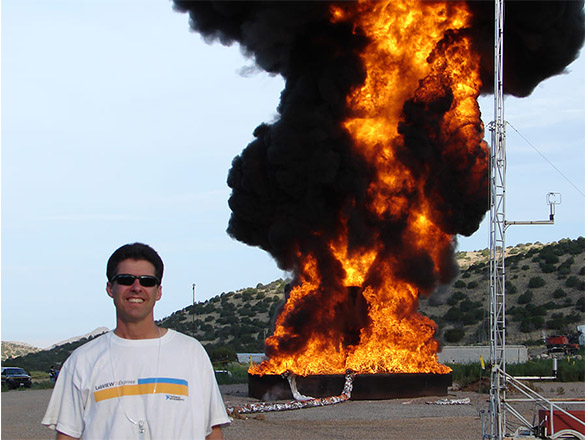
Nuclear and other radioactive materials are used for life-saving medical diagnostics and treatments, electricity generation without greenhouse gas emission, national defense, advanced measurements, food sterilization, and other purposes.
For society to benefit from these important uses, packaging that protects the public and the environment during the storage, transport, and disposal of these hazardous materials must be developed and safely operated. Federal regulations require that these package work properly under normal as well as severe fire, crash, and other accident conditions. Professional opportunities in industry, national laboratories, and government agencies are available for engineers with nuclear packaging safety interest and expertise. The University of Nevada, Reno Mechanical Engineering Department’s Nuclear Packaging Program has performed packaging research since 1993.
Please contact the Nuclear Packaging faculty if you would like additional information, or to become involved in Nuclear Packaging Program activities.
Nuclear packaging faculty
Additional resources
Opportunities for Student Involvement
Funded and for-credit opportunities are available for qualified graduate and undergraduate students who would like to gain experience and research expertise related to nuclear packaging safety and thermal/fluid science. These opportunities involve working with faculty members and other students. Several students from this program are now employed in related fields. Additionally, the University of Nevada, Reno Graduate Fellowship in Nuclear Power funds US citizens and permanent residents, who are interested in working for nuclear industry, national labs, or government agencies, to earn MS and Ph.D. degrees.
Graduate Assistantships for students seeking Ph.D. or MS degrees
Self-Powered Platform to Measure and Report Used Nuclear Fuel Canister Internal Conditions
In September 2020, the US Nuclear Regulatory Commission announced, based on a competitive grant application process, it is providing the University of Nevada, Reno College of Engineering with nearly $500,000 over three years to develop a proof-of-concept system to measure conditions inside thick-walled used nuclear fuel canisters, and safely transmit the data to a receiver outside. This work will help assure the safety of used nuclear fuel storage and transportation. It will require the development of low-power magnetic resonance signals that can reliably transmit data across thick metal walls. It will also develop and place thermoelectric devices that harvest heat generated by the used fuel to produce electric power. That energy will power the measurement and signal transmission devices. Multiple graduate students will work closely with engineering faculty members to perform theoretical, computational, and experimental research and development. This work will be published in archival journals and peer-reviewed conferences proceedings. The research group will interact with a nuclear technology and services company. The work will not involve contact with radioactive materials.
A bachelor’s degree in mechanical or electrical engineering, or a closely related field, and a strong interest in performing research, are required. US citizenship or permanent residency is also required. The assistantship will provide University of Nevada, Reno graduate tuition, health benefits, supervision by faculty members, and a stipend of $1600/month for Master students, or $1900/month for Ph.D. students. Hourly employment for undergraduate students is available, especially for students who are interested in starting graduate studies within a year. For more information, please contact Professors Miles Greiner, Mustafa Hadj Nacer, Yan Wang, and/or JiHwan Yoon.
Ventilation Requirements for Nuclear Material Staging Facility
This work is developing computational fluid dynamics-based models to predict temperatures of heat generating nuclear materials packages within staging facilities.
A bachelor’s degree in mechanical engineering or a closely related field, and a strong interest in performing research, are required. US citizenship or permanent residency is also required. The assistantship will provide University of Nevada, Reno graduate tuition, health benefits, supervision by faculty members, and a stipend of $1600/month for Master students, or $1900/month for Ph.D. students. Hourly employment for undergraduate students is available, especially for students who are interested in starting graduate studies within a year. For more information, please contact Professors Miles Greiner, and/or Mustafa Hadj Nacer.
UNR Graduate Fellowship in Nuclear Power
The UNR Graduate Fellowship in Nuclear Power funds US citizens and permanent residents, who are interested in working for nuclear industry, national labs, or government agencies, to earn MS and Ph.D. degrees.
Please contact Foundation Professor Miles Greiner, and/or Research Assistant Professor Mustafa Hadj Nacer for information on hourly employment or ME 499 Special Projects.
Research and Government Service
Since 1993, the US Department of Energy (DOE), the National Nuclear Security Administration (NNSA), the US Nuclear Regulatory Commission (NRC), the State of Nevada, and industry have funded fundamental and applied research to better understand the performance and improve the safety of nuclear packaging. This research involves thermal/fluid science experiments that replicate the conditions of packaging under normal operating conditions, as well as severe hypothetical and historic fire accidents. Program students, faculty and staff have used this data to create and validate computational fluid dynamics (CFD) models. They then use those models to predict package performance under a wide variety of normal and potential accident conditions. Government agencies have funded this work to better understand the level of safety that used-nuclear-fuel packages, which are licensed by the federal government, provide during severe accidents.
Current Research Activities
Nuclear fuel assemblies consist primarily of square arrays of zircaloy cladding tubes that contain uranium dioxide fuel pellets. The pellets become highly radioactive and produce fission product gases while the assembly is used in a power reactor. After used nuclear fuel (UNF) assemblies are removed from a reactor, they are stored underwater while their radioactivity and heat generation rates decrease. The water also shields the surrounding from radiation and controls the fuel temperature. After sufficient time, assemblies are moved into gas-filled stainless-steel canisters. The canisters are then placed into thick-walled packages for onsite dry storage, or offsite transport. During normal storage and transport, the fuel must remain in its original configuration to allow for future processing or repackaging. The Code of Federal Regulations (10CFR71) also require that transport packages ensure containment, shielding, and criticality safety after a series of hypothetical accident events. That series consists of a 9-m drop onto an unyielding surface, a 1-m drop onto a puncture bar, 30-minute engulfment in an 800oC fire, and then water emersion. A Safety Analysis Report of Packaging (SARP) is prepared for each system to demonstrate by analysis and/or testing that the package will meet all relevant requirements. Before the system may be used, the SARP must be assess and approved by a regulatory authority.
Nuclear Packaging Program faculty and students are currently developing computational fluid dynamics (CFD) models to predict UNF temperatures in dry storage facilities, and during vacuum drying processes. They are conducting bench-scale experiments to quantitatively validate these models. They are also using data acquired by other researchers in actual used nuclear fuel packages to validate their models. Additionally, they are performing Direct Simulation Monte Carlo (DSMC) calculations to model heat transfer in moist rarefied gases, to better understand and model heat and mass transport during vacuum drying. We will add links to describe these research investigations.
Nuclear Packaging Program faculty and students are currently developing detailed computational fluid dynamics (CFD) simulation of facilities used to stage large numbers of nuclear materials packages. The nuclear materials within these packages generate heat, but the temperature of certain package components must not exceed specified limits. The computational models include the facility ventilation system, and package heat generation, and air flow within the facility. These models will be used to predict the margin of safety between the package component temperatures and their allowed limits, for a range of ventilation temperatures and flow rates. This work is being funded by the National Nuclear Security Administration (NNSA). Opportunities are available for US citizens or permanent resident students to be involvement to be involved in this work.
In September 2020, the US Nuclear Regulatory Commission announced that it is providing three-years of funding to develop a proof-of-concept platform to measure conditions inside thick stainless-steel walled used nuclear fuel canisters, and safely transmit the data to a receiver outside. This work will help assure the safety of used nuclear fuel storage and transportation. The research will develop low-power magnetic resonance signals that can reliably transmit data across the canister lid. It will also develop and place thermoelectric devices that harvest heat generated by the used fuel to produce electric power. That energy will power the measurement and signal transmission devices. Multiple graduate students will work closely with engineering faculty members to perform theoretical, computational, and experimental research and development. The research group will interact with a nuclear technology and services company. Opportunities for graduate students are available.
Earlier Research and Government Service Activities
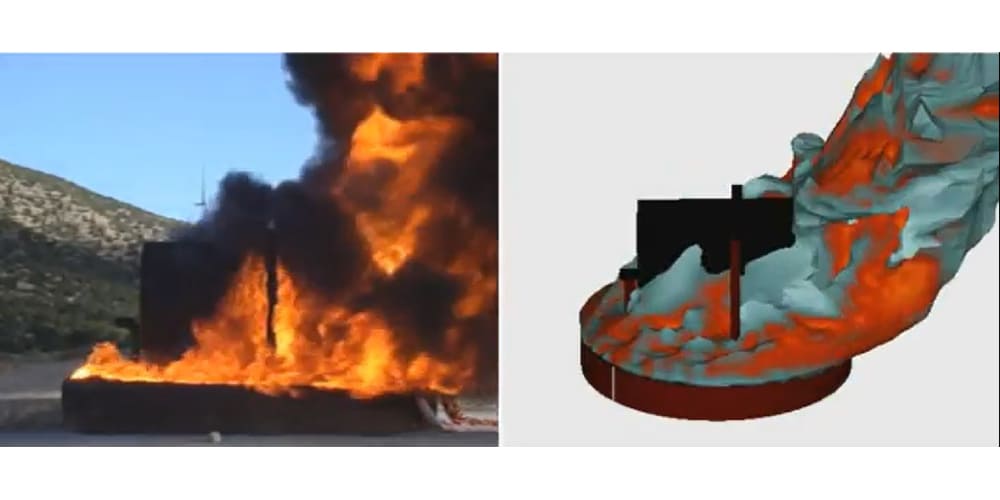
From 2000 to 2008, Dr. Greiner and his students performed large-scale experiments and computational studies of heat transfer to massive objects engulfed in pool fires. This work focused on the interaction between fires, the surrounding wind conditions, and engulfed objects. It has led to an understanding of the thermal radiation properties of fires as well as the accuracy of inverse-conduction techniques used to measure heat flux in fires. Professor Greiner has used this work as a basis to estimate the response of truck- and railcar-sized used nuclear fuel transport packages under severe accident conditions. The DOE and Innovative Technologies Solutions Corporation have funded this work. Based on publications in this area, he received an award for co-authoring the Outstanding Operations, Applications, and Components Technical Paper at the 2003 ASME Pressure Vessel and Piping Conference, and the G.E.O. Widera Literature Award for co-authoring the Outstanding Technical Paper in the 2004 ASME Journal of Pressure Vessel Technology.
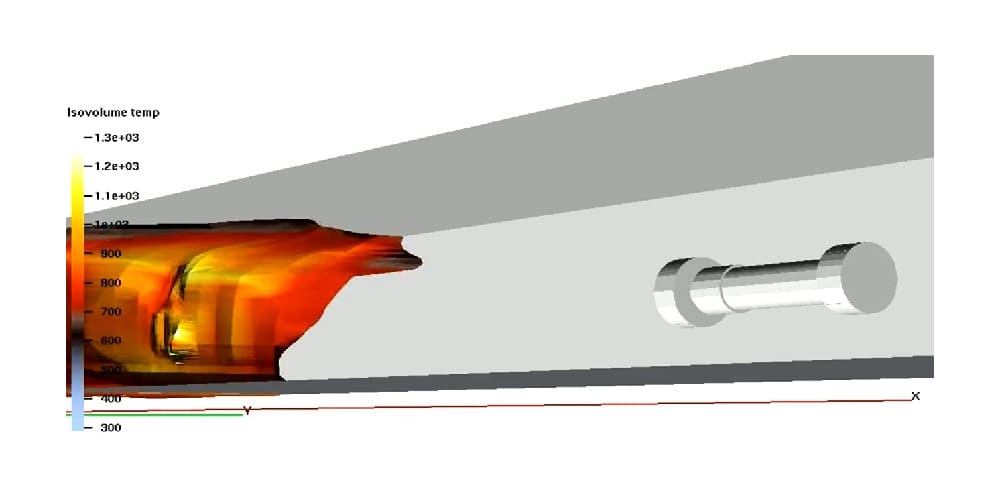
From 2011 to 2013, Professor Greiner and his students performed computational fluid dynamics/radiation heat transfer simulations, using the Container Analysis Fire Environment (CAFE). to predict the thermal response of a GA-4 truck cask, assuming it was in proximity to two historic accidental fires. The GA-4 is licensed by the US Nuclear Regulatory Commission to transport four pressurized water reactor (PWR) used fuel assemblies, based on relevant federal regulations. The selected fire accidents took place in the Caldicott Highway Tunnel (near Oakland, California) in 1982, and Baltimore’s Howard Street Railroad Tunnel in 2001. The goal of that work was to evaluate the adequacy of federal regulations to assure that a licensed package would protect the public and the environment during severe accidents.
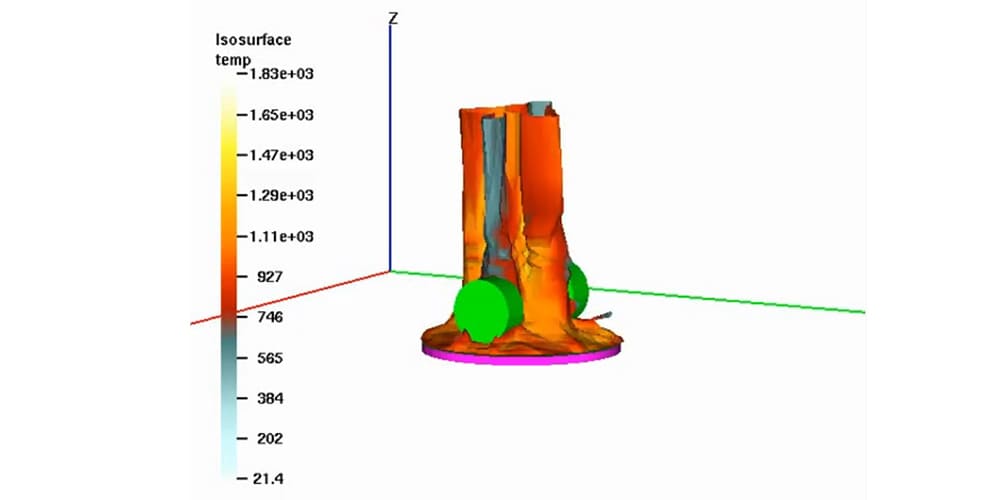
From 2000 to 2006, the State of Nevada funded Professor Greiner and his students to predict the response of used nuclear fuel transport packages to a range of extra-regulatory fire accident conditions, using the Container Analysis Fire Environment (CAFE) computer code.
Related Thermal/Fluid Science Research
Program faculty, students and staff have performed a wide range of related thermal/fluid science research, focusing on heat transfer augmentation, space system thermal management, and other important applications. This work has been funded by the National Science Foundation, DOE, NASA and other agencies and industry. We will add links to this page to describe these research programs.
Student Testimonials
I became interested in nuclear packaging during my final year of the mechanical engineering B.S. program at UNR. I found it was an excellent opportunity to earn a master’s degree through a funded research position.... My research position and internships have been great opportunities for learning the computer simulation programs that I will be using in the industry.
Joel Kaderka
Hometown: Lotus, Calif.
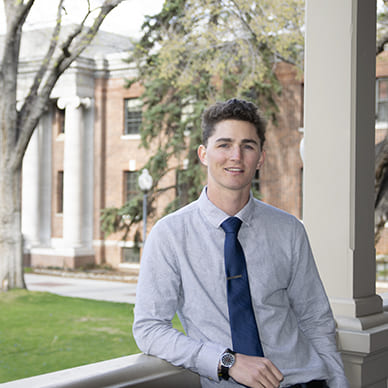
Dilesh Maharjan
Peachtree Corners, Georgia
Nuclear Packaging Program from August 2013 to June 2018
When I joined UNR for the PhD program, I did not have any knowledge of Nuclear Packaging. After talking to Dr. Miles Greiner in the first few days, I became aware of this field and the work he and his team were doing. Fortunately, the work was mainly concentrated on the areas of my interest i.e., Thermal and Fluid science. As I became familiar with the processes and requirements related to nuclear packaging, and the impact of research work that could be done in this field, I wanted to be part of the team.
My research at UNR mainly focused on vacuum drying of Spent Nuclear Fuel. SNF goes through a drying process when it is removed from underwater pools and placed in air-filled canisters, to ensure that all water is removed before the canisters containing the fuel are sealed. One way of drying is by evacuating the container. During vacuum drying, the temperature of SNF tends to increase due to gas rarefaction. It is very important to keep the temperature below certain critical limits. My research at UNR focused on modeling the rarefied gas condition using Computational Fluid Dynamics (CFD) to predict the temperature of SNF. Initially, we verified a simple two-dimensional CFD model against results from proven methods like the Shakov Model Kinetic Equation and the Direct Simulation Monte Carlo (DSMC) method. Additionally, we constructed an experimental setup, with a 7x7 array of heated rods inside a square pressure tube, to emulate a real fuel assembly inside the canister. I validated CFD results from an accurate three-dimensional model of the experimental setup against the experimental results.
I am working as a Thermal Engineer in NAC International since June 2018, after I completed by PhD. I am working in very much the same field as my PhD research work, doing thermal analysis of transport and storage systems of Spent Nuclear Fuel for various clients. I am very thankful for the skills I learned and experiences I accumulated during my time in UNR, which have made it easier to adapt to professional life.
Venkata Venigalla
Hyderabad, India
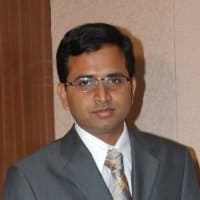
I was introduced to the field of nuclear packaging during my Master’ program at the University of Nevada, Reno working as a Graduate Research Assistant for Professor Miles Greiner. I became interested in this work observing the various projects that were being handled under Professor Greiner and his doctoral students. The sheer size of the packages and the level of detail that goes into designing them furthered my interest to develop a deeper understanding of the thermal performance.
At UNR, I worked on extensively on simulating the thermal response of nuclear waste transportation cask engulfed in various fire scenarios. As part of this work, we developed various studies to estimate the heat transfer within the fuel regions for a legal weight truck cask. During this work, I was exposed to the various regulations governing the nuclear industry such as 10CFR 50, 71 and 72 and various other regulations providing a direct connection to industrial applications.
I am currently working as a Supervisor for ORANO TN which is a leading supplier of spent nuclear fuel packages. My work at UNR was directly applicable when I graduated and helped me land the Thermal Engineer position at ORANO TN (Formerly Transnuclear Inc.)
As a Mechanical Engineer, my primary interest is in the area of heat transfer and thermal performance. CFD simulations and utilizing advanced tools to provide high fidelity solutions is one of my current focus areas.
In my junior year of undergrad, I learned about the nuclear packaging work being done at the University of Nevada, Reno by my professor Dr. Mustafa Hadj-Nacer.... The research that I have conducted at UNR has provided a great jumping off point for tackling research at my employer Lawrence Livermore National Laboratory.
Mitchell Lane
Hometown: Pleasant Hill, Calif.
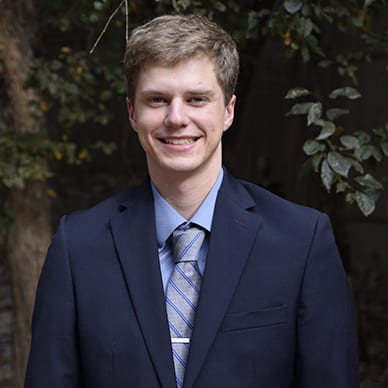
Alex Kramer
Carson City, Nev.
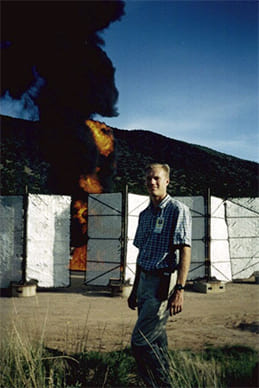
I am Alex Kramer, Carson City High School graduate of 1992. I started the UNR Mechanical Engineering program in 1996. I had worked as a machinist for 3 years and earned an associate degree in Electronics Technology prior to attending UNR. While I was in my 3rd year at UNR, Dr. Greiner mentioned that he was looking for a student researcher. He noticed that I had done well in his ME 322 Instrumentation class, so he took a chance and offered me the job. It was a big change for me at the time because I was working part time at an automation company and supporting myself while taking a full load of classes.
I started doing thermal modeling of a nuclear waste transport container with Patran software on what was a pretty powerful workstation at the time. The designers of these containers have struggled to quantify the thermal response which the container experiences when there is a transportation accident involving a fire. So the Department of Energy had invested money to better understand the phenomena of heat transfer from large fires. Dr Suo-Anttila of Sandia National Labs was developing a fire heat transfer simulation program that could be integrated with the Patran thermal software, which simulated the container’s internal response to the heating.
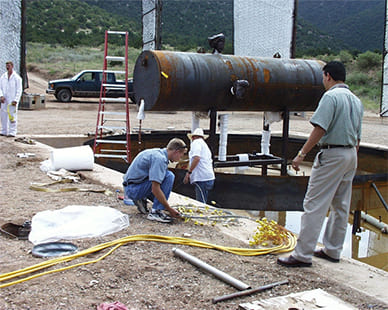
My job was first to get the different software working together, and then to compare results to what was seen in earlier fire experiments. Of course, with any simulation software a lot of simplifying assumptions are made as well as assumptions of the boundary conditions of wind and turbulence at the boundary of the modeled space. So there was a lot of tweaking of the various model parameters and many simulations had to be run. The results had to be compiled in a way that could be made sense of. I learned how to deal with large data sets and how to make plots which could be interpreted to improve the models.
Working on campus in the grad student office was a great change for me. It was so convenient to be able to work on any schedule and even between classes because Dr. Greiner didn’t care when the work was done. Also he always treated his researchers better than usual, both in terms of pay and we were allowed a lot of freedom in how things were done. There was always advice and help available when needed. I liked hanging out with the American and foreign grad students too.
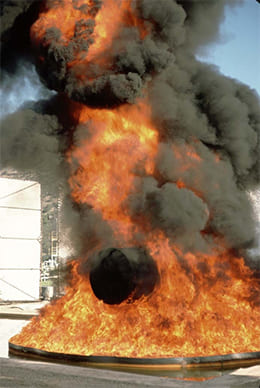
In 2000 I applied and was accepted to grad school at UNR and it was to be a continuation of the work I was doing as an undergrad. I was offered the opportunity to be a summer intern at Sandia Labs in Albuquerque, New Mexico for the specific task of constructing and performing a large-scale fire test on a mock-up of a nuclear waste container. I was to fully design the experiment and see it through to completion. It was a big challenge, but I was able to perform the fire tests two days before classes resumed in Reno, and we got useful data from it. The summer I spent at Sandia was the best of my life because there were lots of other interns and Sandia even had an employee that organized activities for us. I hiked the Grand Canyon, rafted the Rio Grande, and made some great friends that I still have 20 years later. It also paid pretty well.
I spent the next three semesters of graduate school analyzing the data from that fire experiment. We wrote a bunch of papers and traveled to New York City, Seattle, Atlanta, San Diego, and a few other places to present them at conferences. We had a papers published in the Journal of Heat transfer, Journal of Pressure Vessel and Piping, and others. I was earning a Master’s degree, traveling the US, and getting paid at the same time and it even covered tuition fees. How can you get a better deal than that?
Are you ready to make a world of difference?
Join the College of Engineering students, faculty and alumni who are developing the ideas, techniques and technologies that change the world.



